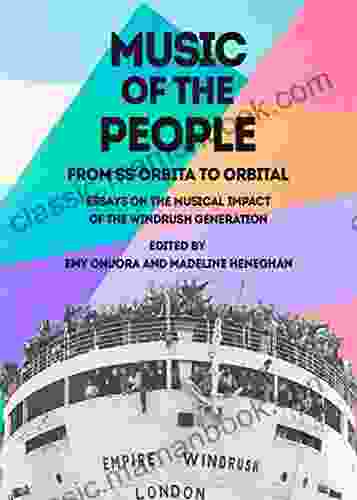From SS Orbita to Orbital: The Evolution of Space Photography

Space photography has come a long way since the early days of the space race. In the 1960s, astronauts used handheld cameras to take pictures of Earth from space. These images were often blurry and distorted, but they were still groundbreaking at the time.
Today, astronauts use sophisticated cameras and lenses to capture stunning images of Earth, the moon, and other planets. These images are used for scientific research, education, and public outreach.
4.9 out of 5
| Language | : | English |
| File size | : | 2907 KB |
| Text-to-Speech | : | Enabled |
| Screen Reader | : | Supported |
| Enhanced typesetting | : | Enabled |
| Word Wise | : | Enabled |
| Print length | : | 90 pages |
| X-Ray for textbooks | : | Enabled |
The Early Days of Space Photography
The first space photographs were taken by the crew of the Soviet spacecraft Vostok 1 in 1961. These black-and-white images showed Earth from a distance of about 260 miles (420 kilometers).
In 1962, astronaut John Glenn became the first American to orbit Earth. He used a handheld camera to take pictures of Earth, the moon, and the stars.
The following year, astronauts Gordon Cooper and Pete Conrad became the first Americans to spacewalk. They used a handheld camera to take pictures of each other and of Earth.
The Development of Space Cameras
The early space cameras were not very sophisticated. They were often handheld and used film. This limited the quality of the images that could be taken.
In the 1970s, NASA began to develop more sophisticated space cameras. These cameras were designed to be used in spacewalks and on the moon. They were also designed to use digital technology, which allowed for higher-quality images.
The first digital space camera was used on the Space Shuttle mission STS-41G in 1984. This camera was able to take high-resolution images of Earth, the moon, and the stars.
The Hubble Space Telescope
The Hubble Space Telescope (HST) is a space telescope that was launched into orbit in 1990. The HST is equipped with a powerful camera that has taken some of the most iconic images in the history of space photography.
The HST has imaged a wide range of objects in space, including galaxies, nebulae, and planets. The telescope has also been used to study the early universe and to search for exoplanets.
The International Space Station
The International Space Station (ISS) is a space station that has been continuously inhabited since 2000. The ISS is equipped with a variety of cameras that are used to take pictures of Earth, the moon, and the stars.
The ISS cameras have been used to take some of the most beautiful images of Earth ever seen. The cameras have also been used to study the effects of space on the human body and to conduct scientific research.
The Future of Space Photography
Space photography is constantly evolving. As new technologies are developed, new possibilities for space photography are opened up.
In the future, we can expect to see even more stunning images of space. We may also see space photography used in new and innovative ways, such as for virtual reality and augmented reality applications.
Space photography has come a long way since the early days of the space race. Today, astronauts use sophisticated cameras and lenses to capture stunning images of Earth, the moon, and other planets. These images are used for scientific research, education, and public outreach.
The future of space photography is bright. As new technologies are developed, new possibilities for space photography are opened up. We can expect to see even more stunning images of space in the years to come.
Image Credits
- Image of the Earth from space: NASA
- Image of the moon from space: NASA
- Image of the Hubble Space Telescope: NASA
- Image of the International Space Station: NASA
4.9 out of 5
| Language | : | English |
| File size | : | 2907 KB |
| Text-to-Speech | : | Enabled |
| Screen Reader | : | Supported |
| Enhanced typesetting | : | Enabled |
| Word Wise | : | Enabled |
| Print length | : | 90 pages |
| X-Ray for textbooks | : | Enabled |
Do you want to contribute by writing guest posts on this blog?
Please contact us and send us a resume of previous articles that you have written.
 Top Book
Top Book Novel
Novel Fiction
Fiction Nonfiction
Nonfiction Literature
Literature Paperback
Paperback Hardcover
Hardcover E-book
E-book Audiobook
Audiobook Bestseller
Bestseller Classic
Classic Mystery
Mystery Thriller
Thriller Romance
Romance Fantasy
Fantasy Science Fiction
Science Fiction Biography
Biography Memoir
Memoir Autobiography
Autobiography Poetry
Poetry Drama
Drama Historical Fiction
Historical Fiction Self-help
Self-help Young Adult
Young Adult Childrens Books
Childrens Books Graphic Novel
Graphic Novel Anthology
Anthology Series
Series Encyclopedia
Encyclopedia Reference
Reference Guidebook
Guidebook Textbook
Textbook Workbook
Workbook Journal
Journal Diary
Diary Manuscript
Manuscript Folio
Folio Pulp Fiction
Pulp Fiction Short Stories
Short Stories Fairy Tales
Fairy Tales Fables
Fables Mythology
Mythology Philosophy
Philosophy Religion
Religion Spirituality
Spirituality Essays
Essays Critique
Critique Commentary
Commentary Glossary
Glossary Bibliography
Bibliography Index
Index Table of Contents
Table of Contents Preface
Preface Introduction
Introduction Foreword
Foreword Afterword
Afterword Appendices
Appendices Annotations
Annotations Footnotes
Footnotes Epilogue
Epilogue Prologue
Prologue Imelda May
Imelda May William Powell
William Powell Carmen Aguirre
Carmen Aguirre C H Sisson
C H Sisson Faith E Andreasen
Faith E Andreasen J Todd Hawkins
J Todd Hawkins Christian Jacq
Christian Jacq Mila Oliver
Mila Oliver Techexp Academy
Techexp Academy Edward Ashton
Edward Ashton Anzhela Shaposhnyk
Anzhela Shaposhnyk Brandon Roe
Brandon Roe G C Roberts
G C Roberts Kerry Greenwood
Kerry Greenwood Casey Michel
Casey Michel Soteira Press
Soteira Press Wayne Rohde
Wayne Rohde Dr Anjana Warrier
Dr Anjana Warrier Marv Wolfman
Marv Wolfman Terry James
Terry James
Light bulbAdvertise smarter! Our strategic ad space ensures maximum exposure. Reserve your spot today!

 Terence NelsonUnderstanding the Role of Wealth Managers in Catering to the Needs of the One...
Terence NelsonUnderstanding the Role of Wealth Managers in Catering to the Needs of the One...
 Owen SimmonsA Comprehensive Journey through the Emotive Landscape of Poetry: Exploring...
Owen SimmonsA Comprehensive Journey through the Emotive Landscape of Poetry: Exploring... Devin RossFollow ·17.8k
Devin RossFollow ·17.8k Joshua ReedFollow ·12.8k
Joshua ReedFollow ·12.8k Aleksandr PushkinFollow ·5k
Aleksandr PushkinFollow ·5k Jake PowellFollow ·11.7k
Jake PowellFollow ·11.7k Billy FosterFollow ·19k
Billy FosterFollow ·19k Gus HayesFollow ·18.7k
Gus HayesFollow ·18.7k Terry PratchettFollow ·18.6k
Terry PratchettFollow ·18.6k Simon MitchellFollow ·4.9k
Simon MitchellFollow ·4.9k

 Bryan Gray
Bryan GrayCello Alternativo: Exploring Contemporary Pizzicato...
: Embracing the Avant-Garde Within...

 Victor Hugo
Victor HugoThe Social Revolution: Barry Libert's Vision for a More...
In a world where...

 Tony Carter
Tony CarterA Comprehensive Guide to Crafting Clear and Effective Job...
A job description is a critical tool...

 Deacon Bell
Deacon BellSelected Poems And Prose Lorenzo Da Ponte Italian Library
Lorenzo Da Ponte, born...

 Francisco Cox
Francisco CoxWhat You Need To Know About Opportunity Cost: A...
Opportunity cost is a fundamental concept...

 Bill Grant
Bill GrantWhy Our Kids With Behavioral Challenges Are Falling...
Every year,...
4.9 out of 5
| Language | : | English |
| File size | : | 2907 KB |
| Text-to-Speech | : | Enabled |
| Screen Reader | : | Supported |
| Enhanced typesetting | : | Enabled |
| Word Wise | : | Enabled |
| Print length | : | 90 pages |
| X-Ray for textbooks | : | Enabled |








